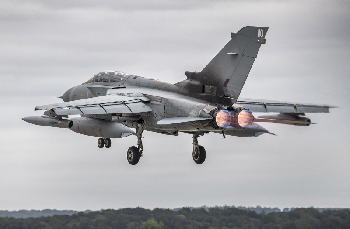
After 40 years in service, the Royal Air Force’s fleet of Tornados are set to retire at the end of March. This week, having flown its final overseas mission, it had a farewell tour of the UK, flying past 36 sites – both RAF bases and areas of significance to the aircraft such as BAE Systems’ Warton and Salmesbury sites.
History of the Tornado
The Tornado first entered into active service with the RAF in 1979 built as part of a consortium between the UK – BAE Systems, Germany – MBB and Italy – Aeritalia. During its conception, one of its unique advantage was being able to fly fast and low so it could – in theory – evade Soviet air defence systems.
The Tornado’s primary role was ground attack and reconnaissance, fitted (to the present day) with weapons including Storm Shadow, Brimstone and Paveway. This capability will now be fulfilled solely by the Eurofighter Typhoons and F-35s going forward.
The Tornado has been used significantly throughout its years of service in combat missions such as the first Gulf War, Kosovo War, Iraq War, Afghanistan, Libya and most recently in Syria.
The Tornado has a maximum speed of 1.3 mach which is faster than the speed of sound but has since been outpaced by the Eurofighter Typhoon in the RAF’s squadron at 2 mach.
Future of the UK’s combat air capability
With the Tornado retiring, we look to the future of the UK’s combat air capabilities. The Eurofighter Typhoon is set to retire in the 2040s, which may seem far away to some but in reality, it is just around the corner when it comes to the time it takes to conceive and create an innovative, world-leading fighter jet.
That’s why last year at Farnborough International Airshow, the Team Tempest partnership was launched, to explore and conceive the UK’s next-generation combat aircraft. Following on from this launch, the Team Tempest partners are now ready to host their first industry engagement event on 19 March for UK companies interested in the Team Tempest Programme. Companies interested in attending the event can register for the briefing now.
Key facts about the Tornado
- Engines: Two Rolls-Royce RB199 MK103 turbofans
- Max Altitude: 50,000ft
- Max Speed: 1.3 Mach
- Thrust: 16,000lbs each





